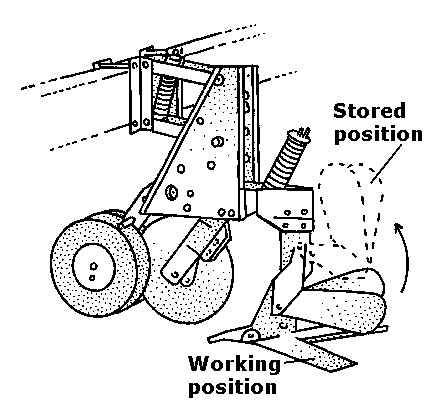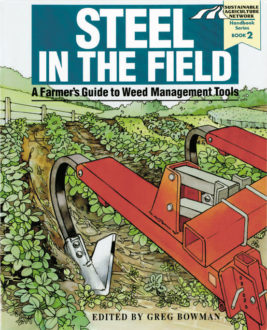Agronomic Row Crops
Cultivator Sweeps, Knives and Wings
1. Point-and-share (three-piece) sweeps (14" to 27" wide, for straight shanks) use a pair of replaceable, two-edged shares that usually lay flat to slice weeds. Replaceable point fractures soil, increasing penetration.
See: Erisman, Kenagy, Thompson
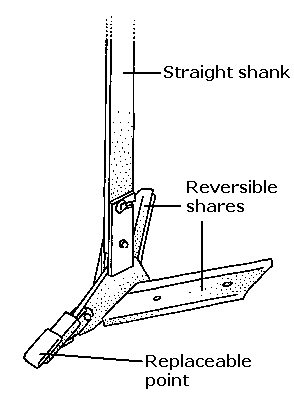
2. One-Piece, No-Till Sweeps (6" to 28" wide, for straight shanks) have a flat-crown, low wing (shoulder) angle. These sweeps leave row middles flat; slice through tall weeds and uproot shallow ones.
See: Bennett, Erisman, Hattaway, Kenagy, Thompson, Thacker
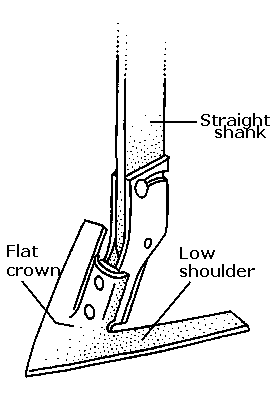
3. Pointed Row-Crop Sweep (4" to 7" wide, for S-tines). Better penetration than wider sweeps, more coverage than narrower shovels. Low-profile sweeps give similar soil mixing and weed impact as one-piece sweeps; moderate profile (higher center zone) causes greater mixing.
See: McKaskle
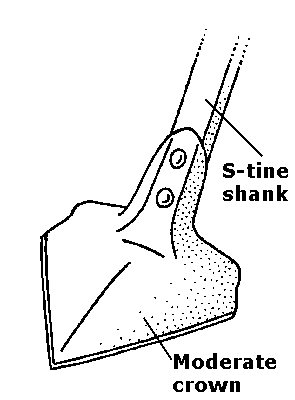
4. Duckfoot sweep (2" to 7" wide, for S-tines) provides good penetration of hard soil, significant soil mixing and weed uprooting (not slicing).
See: Chambers, Foster
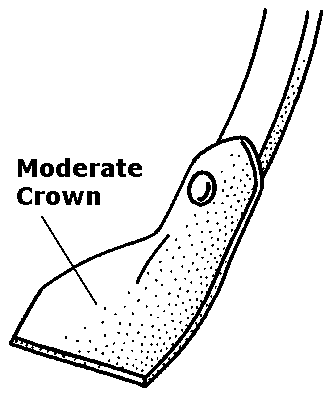
5. Vegetable (Beet or Delta) Knife (8" to 30" wide, for straight shanks). For close cultivation in clean-tillage fields. A long, flat vertical face runs parallel to the row to protect the crop while a thin, flat sweep extends into the row middle. Mounted on straight or offset (dog-leg) standards.
See: deWilde, Foster, Haines, Kenagy, McKaskle, Muller, Thacker
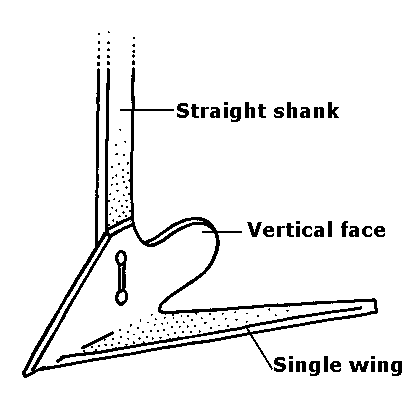
6. Ridging Wings (on no-till sweeps) divert soil into row area to bury weeds and create an elevated ridge of soil for next year's planting at the same row position as the current year. Often width-adjustable and hinged to swing upward on the standard into a storage position during non-use. Usually used at last cultivation.
See: Thompson
